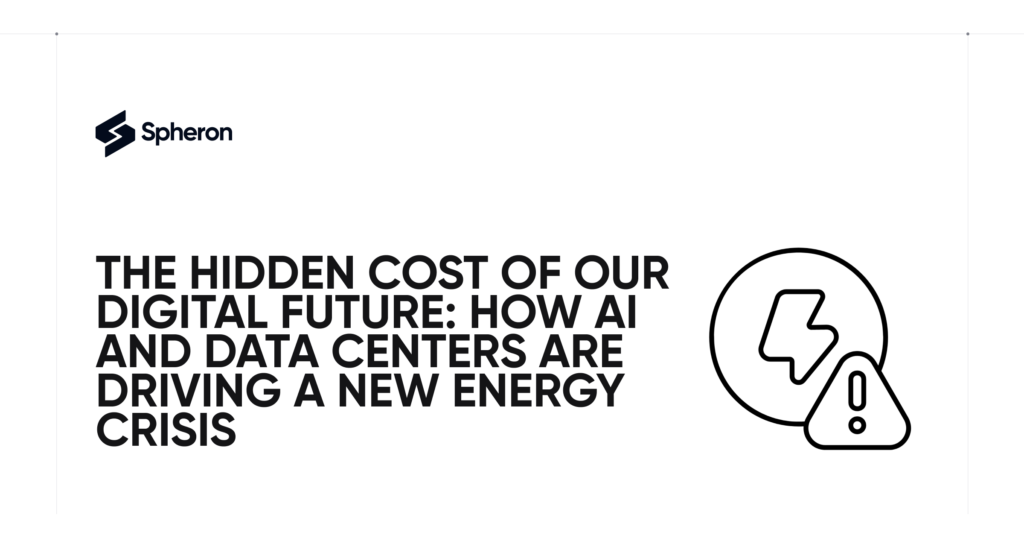In the age of artificial intelligence, it’s easy to believe that our digital world operates without consequence. You tap a screen, prompt an AI to generate music or text, or upload a photo to the cloud, and it all just works—seamlessly, invisibly.
But behind this frictionless user experience lies an immense physical infrastructure with very real energy demands. A growing number of experts are sounding the alarm: the convenience of our digital era is coming at a steep environmental cost, one we can no longer afford to ignore.
The Alarming Forecast
A recent report by the International Energy Agency (IEA) warns that by 2030, energy consumption from data centers is projected to quadruple. The reason? The rapid growth of AI, cloud computing, and blockchain systems.
What sounds like a technical forecast has real-world implications. If these trends continue, AI and associated digital infrastructures could soon consume more electricity than entire countries. And this isn’t a distant future scenario — it’s already starting to play out.
In Ireland, data centers currently account for nearly 20% of the country’s total electricity usage — a staggering figure that’s rising fast. Countries like the Netherlands and Germany are grappling with similar questions: Should precious power be reserved for residential neighborhoods and farms, or diverted to server farms training large language models?
Why AI Is So Power-Hungry
Much of this surge in energy use stems from the scale of modern AI. Running advanced AI models doesn’t just mean writing more code — it means operating enormous fleets of hardware. Specialized GPUs process massive volumes of data 24/7. These machines require continuous cooling, maintenance, and, above all, power.
Even seemingly simple tasks — like asking a chatbot to summarize an article — consume significantly more energy than a standard web search. Now multiply that by the billions of daily queries, and it’s easy to see how quickly this demand escalates.
Yet the energy cost remains largely hidden from users. There’s no smoke, no noise, no visible infrastructure when you use a cloud service or chat with an AI. But the carbon emissions are very real, and the implications are global.
The Problem with Centralized Infrastructure
At the root of this crisis is the way we’ve built the modern internet. Most of today’s infrastructure is centralized — vast, power-hungry data centers located in a few select areas, owned and operated by a handful of corporations.
This centralization introduces several vulnerabilities:
-
Energy strain on local grids: As seen in Ireland, local energy supplies are being overwhelmed by data centers.
-
Geopolitical risk: A power failure or policy change in one location can disrupt services globally.
-
Loss of sovereignty and resilience: When most of the world’s digital infrastructure is controlled by a few entities, communities lose control over their own data, costs, and access.
It’s not just an environmental issue — it’s a question of governance, resilience, and digital autonomy.
The False Promise of Efficiency Alone
To their credit, some large tech companies are trying to address these issues. They’re investing in renewable energy sources, designing more energy-efficient chips, and improving cooling technologies.
But these efforts are fundamentally incremental. We cannot efficiency our way out of a broken model. The reality is that stacking more servers and deploying more solar panels doesn’t solve the deeper problem of overconsumption and centralization.
What we need is a paradigm shift — a rethinking of how we design, power, and govern our digital infrastructure.
A New Approach: Distributed, Not Centralized
One promising alternative lies in distributed infrastructure. Instead of building more centralized mega-facilities, what if we tapped into the underutilized resources already around us?
That’s the idea behind Spheron, a decentralized compute network that turns idle devices into active participants in the cloud. Think gaming PCs, unused laptops, and dormant workstation machines with powerful chips sitting idle for hours each day. Instead of letting them gather dust, Spheron transforms them into micro data centers that support real-world workloads.
The advantages of this model are profound:
-
Lower environmental impact: No need to build new facilities or drain national grids.
-
Greater resilience: The network isn’t reliant on a few massive locations.
-
Community-driven: People can directly contribute to and benefit from the infrastructure they use.
-
Energy localization: Computation happens closer to where it’s needed, reducing transmission loss and improving efficiency.
This isn’t just a technical solution, it’s a reimagination of the internet itself. A move away from centralized, extractive systems toward distributed, participatory networks.
The Bigger Picture: Sustainability and Trust
We often talk about the importance of energy efficiency in technology. But resilience may matter even more. Resilience means designing systems that adapt to demand, withstand shocks, and evolve with the communities they serve.
And that requires more than engineering. It demands a new philosophy — one that sees sustainability not as a feature, but as a foundation. One that prioritizes transparency, participation, and shared ownership.
This is the vision Hivenet is betting on: a future where the cloud is powered by people, not just corporations. Where data lives closer to the users who generate it. Where digital infrastructure is both environmentally and socially sustainable.
A Fork in the Road
We are not facing a doomsday scenario yet, but we are at a critical inflection point. The digital systems we build today will shape tomorrow’s energy footprint, accessibility, and resilience.
We have the tools to chart a better course. The question is whether we have the will to use them. Let’s move beyond the idea that more compute equals more progress. Let’s build networks that are smarter, more equitable, and more sustainable — by design.
If we want to create a lasting digital future, it shouldn’t be one powered by black-box data centers and unchecked consumption.
It should be something transparent. Something adaptable. Something shared.
And it starts now.

